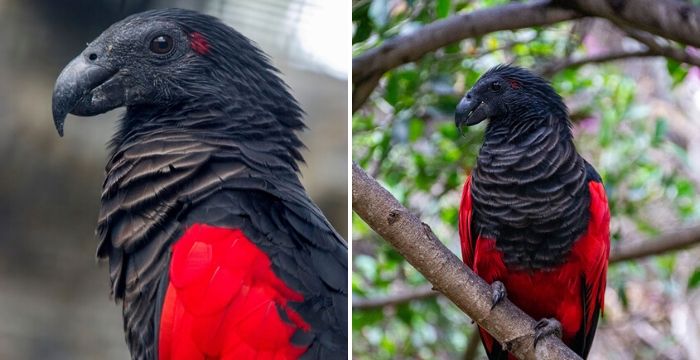At the point when we consider parrots, we, for the most part, envision them as green, red, or blue-hued fowls. Be that as it may, the universe of parrots is much more assorted than you may suspect. All things considered, there are 393 unique types of them that all are very not the same as each other. From sulfur-peaked cockatoos to bronze-winged parrots, these flying birds never stop to shock us with their insight and magnificence. Be that as it may, have you known about Pesquet’s parrot, which is all the more ordinarily known as the Dracula parrot?
More info: iucnredlist.org
Pesquet’s parrot is a grand winged creature that is otherwise called Dracula parrot
These wonderful winged birds are handily perceived by their dark and dim chests, completely dark noses, and strokes of brilliant red quills.
Dracula parrots are short-followed and stretch to almost 50 cm (20 in) long. Their weight is around 680–800 g (24–28 oz).
Females and guys look very comparable. The main distinction between them is that guys have red fixes behind their ears.
In contrast to their other parrot partners, Pesquet’s parrots don’t move to start with one branch then onto the next. Rather, they move by bouncing.
These flying birds must be found in the mountains of New Guinea
What’s fascinating about these winged birds is that they are one of 3 parrot animal groups that have featherless appearances.
The Dracula parrot must be found in New Guinea.
Unfortunately, these striking flying birds have become an objective for nearby poachers, which, notwithstanding expanding natural surroundings misfortune, has put the Dracula parrots’ populace at perilously low numbers.
The main contrast among guys and females is that male Dracula parrots have red specks behind their ears
These winged birds have pursued their quills, which are utilized for stately dresses, just as for the meat and enclosure feathered creature exchange.
The IUCN Red List of Threatened Species assessed Dracula parrots as Vulnerable.
here’s what individuals had to say about this excellent parrot

